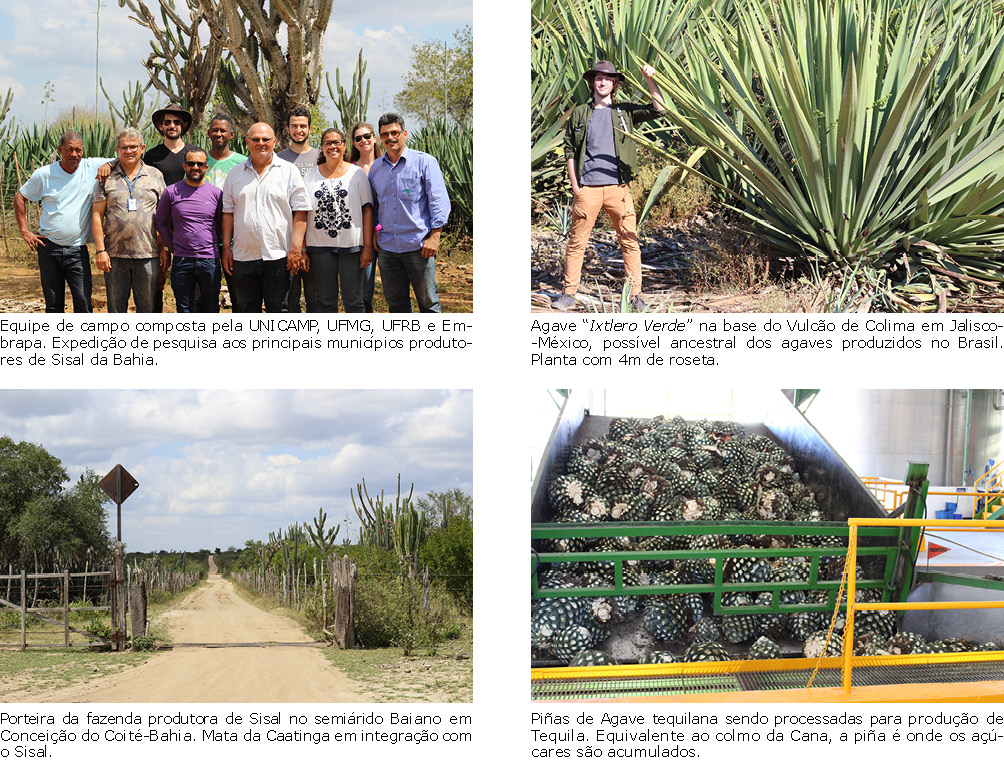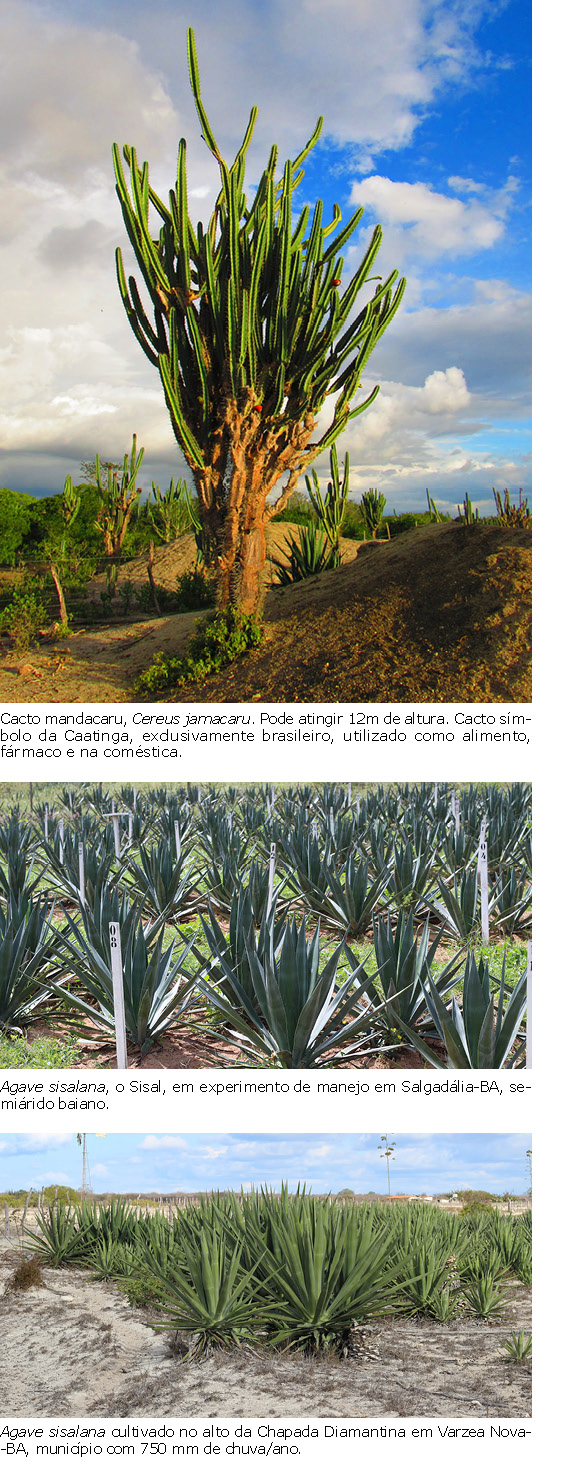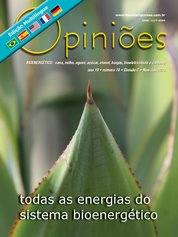Gonçalo Amarante Guimarães Pereira
Professor do Instituto de Biologia da UNICAMP e Coordenador do Laboratório de Genômica e Bioenergia
OpAA74
A odisseia para o desenvolvimento de uma cana para o sertão
No nosso planeta, à exceção das fontes nucleares, toda a energia utilizada pela civilização vem do sol. Mesmo quando utilizamos o petróleo (ou o carvão), que tiramos de debaixo da terra ou do solo oceânico, estamos nos apropriando de uma fotossíntese ancestral, que ficou retida nos “cadáveres” de animais, plantas e, principalmente, microrganismos fotossintetizantes, ao longo de bilhões de anos. Trata-se de uma poupança de energia extraordinária, de que o homem lançou mão de forma intensa a partir do desenvolvimento das máquinas que deram origem à Revolução Industrial.
De forma extremamente simplificada, tudo passa pela “equação da biomassa”: “energia solar + água + CO2= biomassa”, que dá início a uma longa “cadeia de valor”, que vai desde os organismos fotossintetizantes, na base dessa cadeia, até aqueles que se alimentam dos que se alimentaram da biomassa. Quando colocamos a civilização nessa cadeia, o que fazemos é exatamente a mesma coisa: utilizamos a biomassa, viva ou morta, como fonte de energia para absolutamente tudo o que fazemos, desde a nossa alimentação até as transformações industriais mais sofisticadas.
 No fundo, é tudo parte de um mesmo fluxo de energia, que não se cria nem se destrói, apenas se transforma. Por exemplo, vamos pensar que plantamos cana e, com ela, produzimos etanol, biometano e bioeletricidade; o biometano será utilizado para movimentar todas as máquinas da usina, e o excedente será convertido em hidrogênio verde; o CO2 puro da fermentação será enterrado ou usado como base carbônica para a produção de novos combustíveis usando a bioeletricidade (o chamado E-Fuel), entre outras inovações.
No fundo, é tudo parte de um mesmo fluxo de energia, que não se cria nem se destrói, apenas se transforma. Por exemplo, vamos pensar que plantamos cana e, com ela, produzimos etanol, biometano e bioeletricidade; o biometano será utilizado para movimentar todas as máquinas da usina, e o excedente será convertido em hidrogênio verde; o CO2 puro da fermentação será enterrado ou usado como base carbônica para a produção de novos combustíveis usando a bioeletricidade (o chamado E-Fuel), entre outras inovações.
 No fundo, é tudo parte de um mesmo fluxo de energia, que não se cria nem se destrói, apenas se transforma. Por exemplo, vamos pensar que plantamos cana e, com ela, produzimos etanol, biometano e bioeletricidade; o biometano será utilizado para movimentar todas as máquinas da usina, e o excedente será convertido em hidrogênio verde; o CO2 puro da fermentação será enterrado ou usado como base carbônica para a produção de novos combustíveis usando a bioeletricidade (o chamado E-Fuel), entre outras inovações.
No fundo, é tudo parte de um mesmo fluxo de energia, que não se cria nem se destrói, apenas se transforma. Por exemplo, vamos pensar que plantamos cana e, com ela, produzimos etanol, biometano e bioeletricidade; o biometano será utilizado para movimentar todas as máquinas da usina, e o excedente será convertido em hidrogênio verde; o CO2 puro da fermentação será enterrado ou usado como base carbônica para a produção de novos combustíveis usando a bioeletricidade (o chamado E-Fuel), entre outras inovações. Em uma situação como essa, quando fazemos as contas a partir das Análises de Ciclo de Vida (ACV), vamos verificar que “queimar” etanol em um carro flex representará captura líquida de carbono, por mais contraintuitivo que pareça. As diversas transformações da energia levaram ao sequestro líquido do carbono.
Em uma situação como essa, quando fazemos as contas a partir das Análises de Ciclo de Vida (ACV), vamos verificar que “queimar” etanol em um carro flex representará captura líquida de carbono, por mais contraintuitivo que pareça. As diversas transformações da energia levaram ao sequestro líquido do carbono.
Entretanto, o mesmo não se dá com a queima dos combustíveis fósseis, cujo processo simplesmente aumenta a quantidade de gases de efeito estufa na atmosfera, sem qualquer reciclo. Apenas para termos uma ideia do que isso significa, quando a atmosfera do planeta aumenta em um grau de temperatura devido ao aumento da concentração desses gases, isso representa uma retenção de cerca de 1x1019 kJ de energia solar a mais, um valor que representa, aproximadamente, toda a reserva de petróleo existente no planeta...
Isso é muita energia, que normalmente seria simplesmente refletida e encaminhada de volta para o espaço. Como ela ficou retida, ela tem que sair de alguma forma, e, como aprendemos nas aulas de física da escola, essa dissipação ocorre sob a forma de trabalho, ou seja, uma massa que é transportada de um ponto para outro.
Essa massa são os fluidos, tanto o ar como os líquidos. Esses fluidos, catapultados por essa tremenda energia, acabam gerando alterações nas correntes de ar e oceânicas, que levam à aceleração das alterações climáticas. Como resultado prático, modifica-se o zoneamento geográfico, ou seja, onde hoje se planta milho (porque temos chuvas regulares), amanhã não será mais possível; onde hoje se planta cana de sequeiro, por causa dos rios voadores que vêm da Amazônia, amanhã não haverá mais água suficiente; onde hoje é floresta, amanhã poderá ser savana, gerando um efeito dominó destruidor para toda a cadeia dependente da água que esse sistema exuberante coloca na atmosfera.
Em resumo, esse é o problema, que parte da “equação da biomassa”. Precisamos aumentar a produção de biomassa, para reter mais CO2 e, assim, reduzir a energia acumulada na atmosfera, o que “pacificaria” o clima. Entretanto, para isso, precisamos de água para irrigar as nossas culturas, que está em falta exatamente como consequência desse processo. Portanto, um típico dilema do quem vem primeiro, o ovo ou a galinha.
É exatamente para resolver isso que estamos lançando um grande Programa, cujo nome reflete a sua ambição: BRAVE – Brazilian Agave Development. O princípio é simples. Analisando a biosfera, sabemos da existência de um conjunto de plantas capazes de viver no semiárido devido a um metabolismo fotossintético especial, denominado CAM. A estratégia é fechar os estômatos (uma espécie de pequenas boquinhas presentes nas folhas) durante o dia, quando está quente, e abri-los durante a noite para permitir a entrada de CO2.
Esse CO2 é, então, concentrado sob a forma de um ácido (o que explica, por exemplo, a acidez do abacaxi), que vai liberar esse CO2 capturado durante o dia, já dentro da planta, permitindo que ela finalize a fotossíntese. Em alguns poucos casos, esse processo permite não apenas a sobrevivência das plantas, mas uma grande produtividade em biomassa. Esse é exatamente o caso de espécies do gênero agave, que possuem grande variabilidade, algumas acumulando mais açúcar no seu pseudocaule, como a A. tequilana, enquanto outras acumulam mais fibras nas suas folhas, como a A. sisalana. Fazendo um paralelo com a cana, é como se tivéssemos a cana-de-açúcar e a cana-energia.
Os número são extraordinários. Essas plantas são capazes de produzir, após cerca de 5 anos, o total de mais de 800 toneladas de biomassa por hectare, o que geraria cerca de 7.500 l de etanol 1G e 2G por hectare/ano quando anualizado. Esses números são muito próximos ao da cana.
Entretanto, são obtidos em áreas de semiárido, com chuvas escassas e irregulares e pouquíssima adição de fertilizante. Mas não se trata de mágica. Isso é o resultado de um melhoramento genético de milhões de anos feito pela evolução. No México, de onde as espécies são originárias, elas são a fonte da Tequila, o que equivaleria à nossa Cachaça, feita a partir da cana. Entretanto, ao contrário do Brasil, o México não avançou para o desenvolvimento da cadeia de biocombustíveis a partir dessas plantas, e esse é o principal objetivo do BRAVE.
Esse programa, financiado pela Shell a partir da Cláusula de P&D da ANP, visa converter o Agave em uma Cana do Sertão, atuando em todas as frentes necessárias para o desenvolvimento completo da cadeia de valor e utilizando muito do aprendizado da cana-de-açúcar, que se desenvolveu de forma intuitiva. Assim, os objetivos do BRAVE, que combinará ciência e tecnologia, com a associação de universidades (Unicamp, USP, Unesp, UF-RB) e institutos de pesquisa e inovação (Senai-Cimatec), são o desenvolvimento dos seguintes pontos:
(1) Variedades adequadas de Agave;
(2) Mudas baratas e saudáveis;
(3) Variedades resistentes a herbicidas e insetos;
(4) Manejo Agrícola para preparo adequado de solo, plantio, colheita e logística;
(5) Sistema para produção de biogás;
(6) biorrefinarias para processamento das diferentes partes da planta para a produção de etanol de primeira e segunda geração;
(7) Processo de pirólise para a geração de bio-óleo e biochar;
(8) Sistema de incorporação de carbono ao solo a partir do uso do biochar;
(9) Sistema de ACV para análise detalhada do ciclo do carbono; e
(10) Sistema para integração das biorrefinarias de agave no sertão brasileiro, com a recuperação da caatinga e a geração de emprego e renda, de forma sustentável e valorizando a cultura local.
Como sabemos, o sertão corresponde a mais de 10% do nosso território. Viver nessa região é para os fortes, conforme Euclides da Cunha, na sua obra-prima Os sertões. É extremamente difícil planejar sob as condições ali existentes, que não possui ciclo climático anual. O milho que se planta hoje pode simplesmente não vingar, algo que se pode repetir no próximo e nos anos subsequentes.
Poucas soluções foram encontradas para fazer frente a essa lógica, sendo que uma delas foi exatamente o sisal, hoje plantado principalmente ao redor do município de Valente – nome autoexplicativo –, no chamado Território do Sisal, que abriga cerca de 700.000 pessoas (vivendo, direta ou indiretamente, da cultura). Assim, já temos um piloto para mostrar que estamos na direção certa, agora com a oportunidade de amplificar esse princípio.
Estamos à frente de uma revolução. O sertão poderá se transformar em um Oásis de Sol, uma Terra Prometida, onde a ciência e a tecnologia, com as políticas públicas corretas, vão gerar extraordinárias cadeias de valor, que terão o potencial de transformar o Brasil na primeira, e talvez única, nação carbono negativa do planeta.




